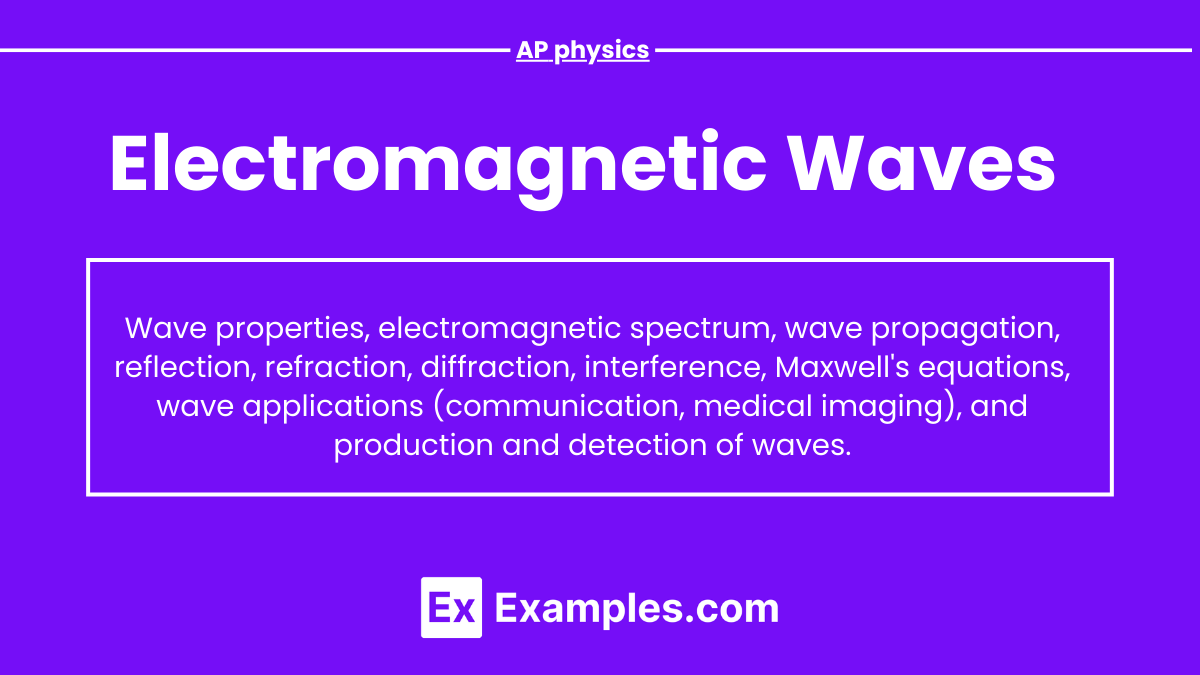Electromagnetic waves are oscillations of electric and magnetic fields that travel through space at the speed of light. They encompass a broad spectrum, including radio waves, microwaves, infrared, visible light, ultraviolet, X-rays, and gamma rays. Understanding these waves, their properties, and their interactions with matter is crucial for the AP Physics exam. These waves play a vital role in various technologies, from communication to medical imaging, making them a fundamental topic in physics.
Learning Objectives
Focus on understanding the nature and properties of electromagnetic waves, including their speed, wavelength, frequency, and amplitude. Learn how these waves interact with matter through reflection, refraction, diffraction, and absorption. Study Maxwell’s equations and their role in wave propagation. Familiarize yourself with the electromagnetic spectrum and the applications of different wave types in communication, medical imaging, and other technologies. Practice solving problems involving wave calculations and wave behavior.
Electromagnetic Waves
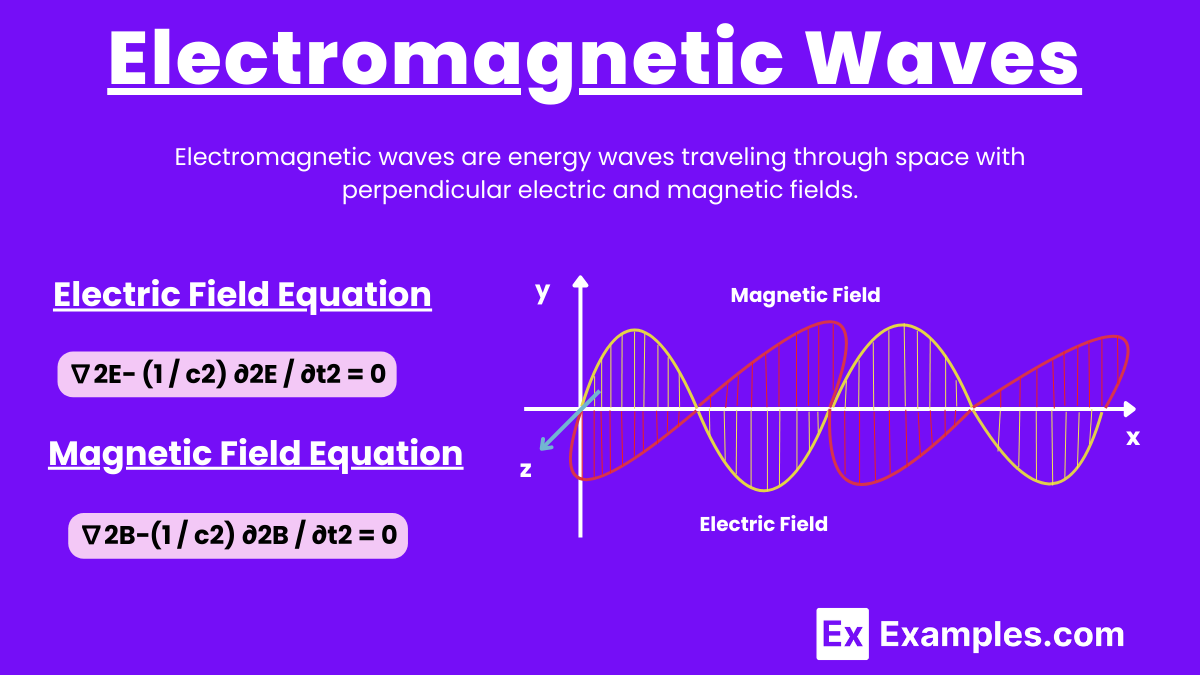
Electromagnetic waves are waves that propagate through the vacuum of space and through matter, composed of oscillating electric and magnetic fields that are perpendicular to each other and to the direction of wave propagation. These waves travel at the speed of light, approximately 3×1083 \times 10^83×108 m/s in a vacuum.
Characteristics of Electromagnetic Waves
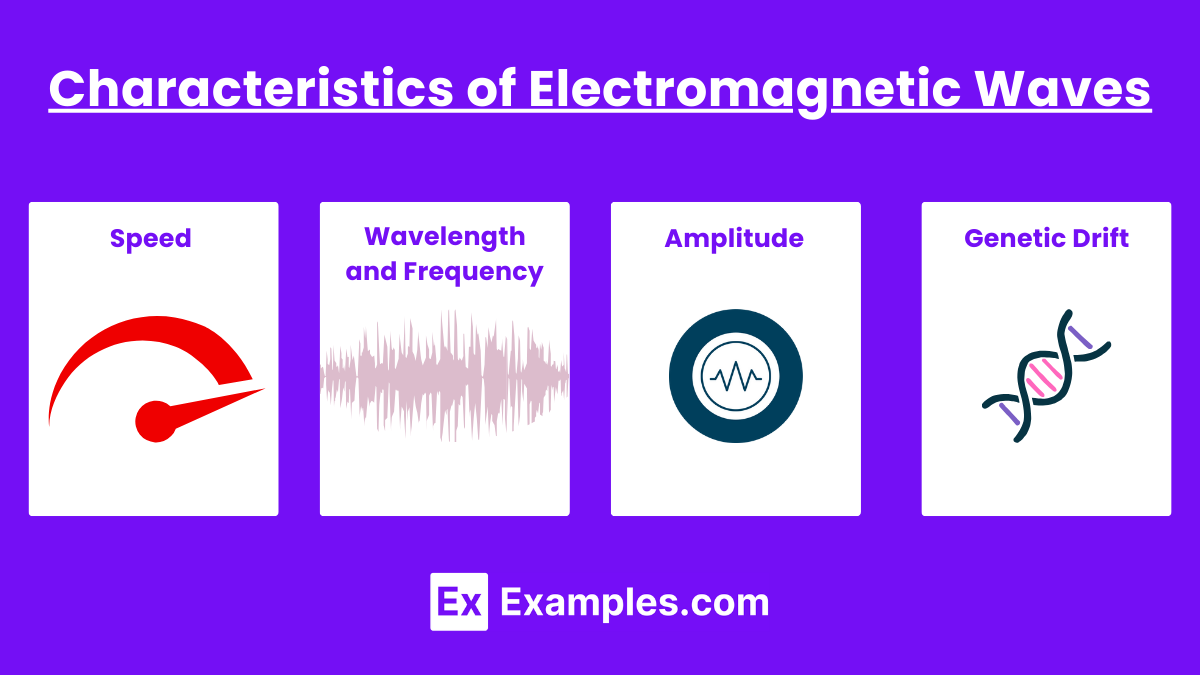
1. Speed
- In Vacuum: The speed of electromagnetic waves in a vacuum is c=3×10⁸m/s.
- In Medium: The speed decreases in materials and is given by v=c/n where n is the refractive index of the medium.
2. Wavelength and Frequency
- Wavelength (λ\lambdaλ): The distance between successive crests or troughs of the wave.
- Frequency (f): The number of waves that pass a point in one second, measured in Hertz (Hz).
- Relationship: c=λf
3. Amplitude
- The maximum extent of the electric or magnetic field from the wave’s equilibrium position.
4. Polarization
- Describes the orientation of the oscillations of the electric field vector.
The Electromagnetic Spectrum
Electromagnetic waves cover a broad range of wavelengths and frequencies, classified into different types based on their properties:
| Type | Wavelength Range | Frequency Range | Common Uses |
|---|---|---|---|
| Radio Waves | > 1 mm | <3×10¹¹Hz | Broadcasting, Communication |
| Microwaves | 1 mm to 1 m | 3×10⁹−3×10¹¹Hz | Cooking, Radar, Communications |
| Infrared Waves | 700 nm to 1 mm | 3×10¹¹−4×10¹⁴Hz | Remote controls, Thermal Imaging |
| Visible Light | 400 nm to 700 nm | 4×10¹⁴−7.5×10¹⁴Hz | Vision, Photography |
| Ultraviolet Light | 10 nm to 400 nm | 7.5×10¹⁴−3×10¹⁶Hz | Sterilization, Fluorescent Lights |
| X-Rays | 0.01 nm to 10 nm | 3×10¹⁶−3×10¹⁹Hz | Medical Imaging, Security |
| Gamma Rays | < 0.01 nm | >3×10¹⁹Hz | Cancer Treatment, Astrophysics |
Production and Detection of Electromagnetic Waves
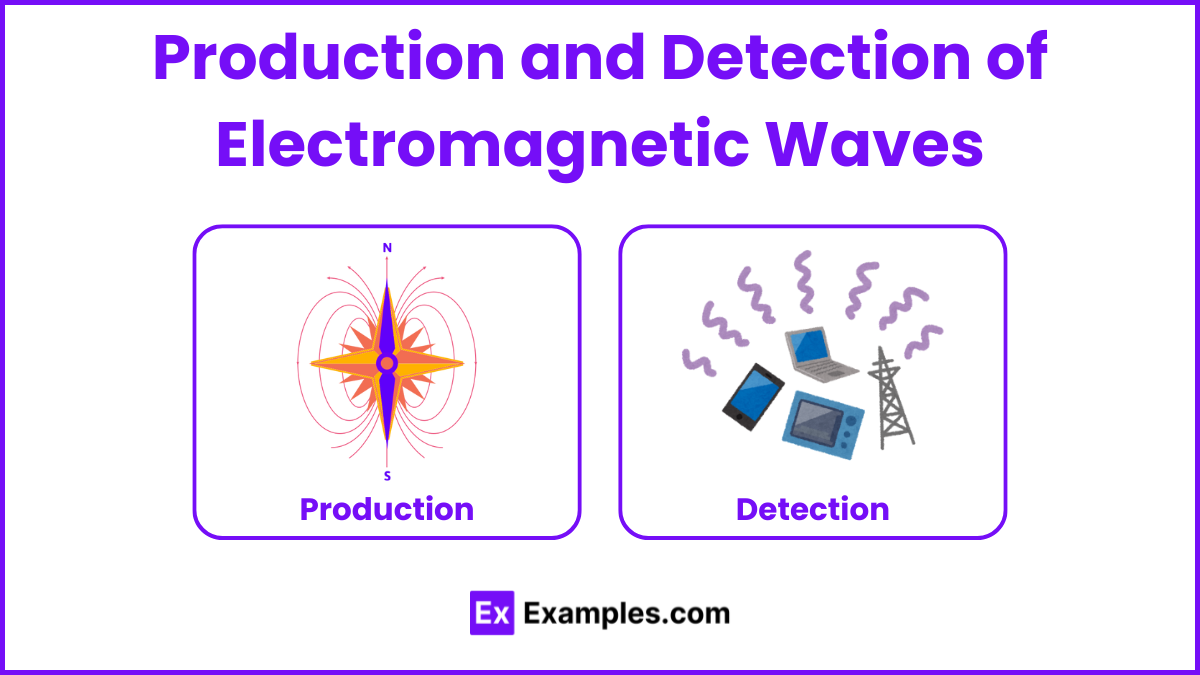
1. Production
Electromagnetic waves are produced by accelerating charges. For instance, oscillating electrons in an antenna produce radio waves.
2. Detection
Different detectors are used based on the type of electromagnetic wave:
- Radio Waves: Antennas
- Microwaves: Microwave receivers
- Infrared: Thermal cameras
- Visible Light: Photodiodes, CCDs
- Ultraviolet: Photomultiplier tubes
- X-Rays: Photographic plates, Geiger counters
- Gamma Rays: Scintillation detectors
Wave Propagation and Interaction with Matter
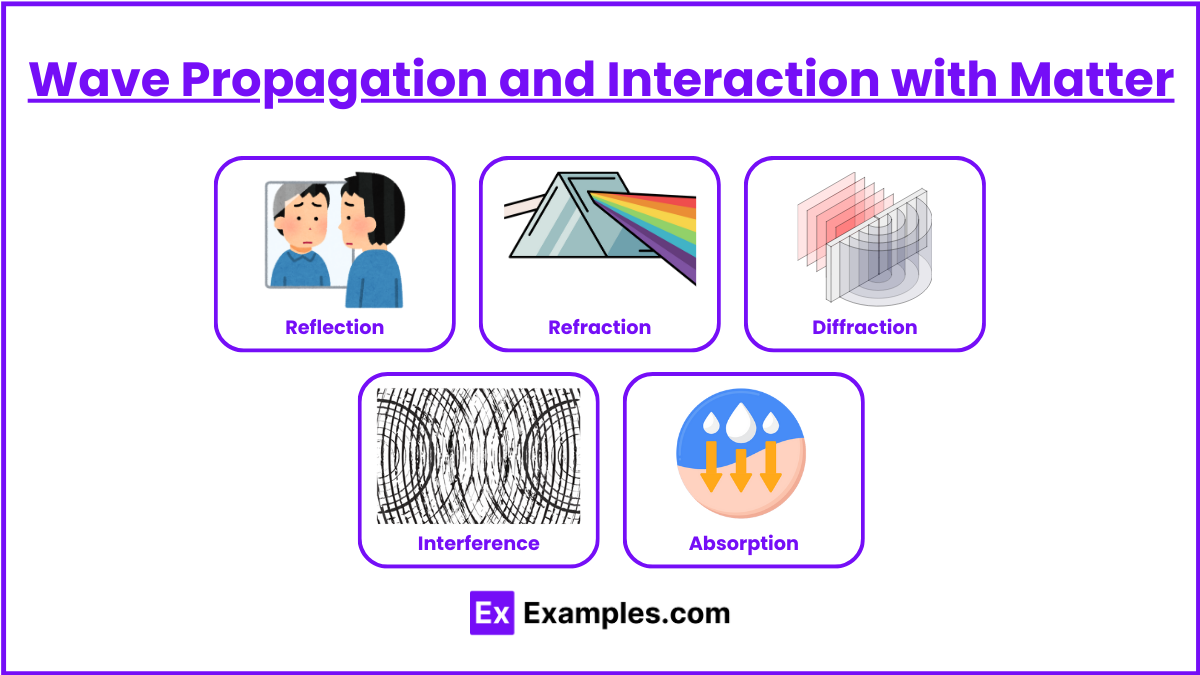
1. Reflection
Electromagnetic waves can reflect off surfaces, following the law of reflection: the angle of incidence equals the angle of reflection.
Law of Reflection: θi = θr
2. Refraction
When waves pass from one medium to another, their speed changes, causing the waves to bend. Snell’s law describes this behavior:
n₁sinθ₁ = n₂sinθ₂
3. Diffraction
Waves can bend around obstacles or spread out after passing through small openings.
4. Interference
When two waves meet, they can interfere constructively (amplifying) or destructively (diminishing) each other.
5. Absorption
Electromagnetic waves can be absorbed by materials, converting wave energy into other forms like heat.
Maxwell’s Equations
Maxwell’s equations describe the behavior of electric and magnetic fields and how they generate electromagnetic waves.
Gauss’s Law for Electricity:
![]()
The electric flux out of a closed surface is proportional to the charge enclosed.
Gauss’s Law for Magnetism:
![]()
There are no “magnetic charges” analogous to electric charges; magnetic field lines are closed loops.
Faraday’s Law of Induction:
![]()
A changing magnetic field induces an electric field.
Ampère’s Law (with Maxwell’s addition):
![]()
A changing electric field and electric current produce a magnetic field.
Examples of Electromagnetic Waves
- Radio Waves: Used for broadcasting radio and television signals.
- Microwaves: Utilized in microwave ovens and radar technology.
- Infrared Waves: Employed in remote controls and thermal imaging cameras.
- Visible Light: Enables vision and is used in photography and illumination.
- X-Rays: Applied in medical imaging to view inside the human body.
Practice Test Questions of Electromagnetic Waves
Question 1
Which of the following electromagnetic waves has the shortest wavelength?
A) Radio Waves
B) Microwaves
C) Infrared Waves
D) Gamma Rays
Answer: D) Gamma Rays
Explanation: Gamma rays have the shortest wavelength and the highest energy of all electromagnetic waves. They are found at the extreme end of the electromagnetic spectrum, beyond X-rays.
Question 2
Which property of electromagnetic waves remains constant when they travel from one medium to another?
A) Speed
B) Wavelength
C) Frequency
D) Amplitude
Answer: C) Frequency
Explanation: When electromagnetic waves move from one medium to another, their speed and wavelength change, but their frequency remains constant. This is because the frequency of a wave is determined by the source of the wave and is unaffected by the medium.
Question 3
In the context of electromagnetic waves, which of the following is true about the relationship between wavelength (λ\) and frequency (f)?
A) They are directly proportional.
B) They are inversely proportional.
C) They are unrelated.
D) Both increase with the speed of light.
Answer: B) They are inversely proportional.
Explanation: The wavelength (λ\) and frequency (f) of an electromagnetic wave are inversely proportional to each other, as described by the equation c=λf, where c is the speed of light. If the frequency increases, the wavelength decreases, and vice versa, to maintain the constant speed of light in a vacuum.

